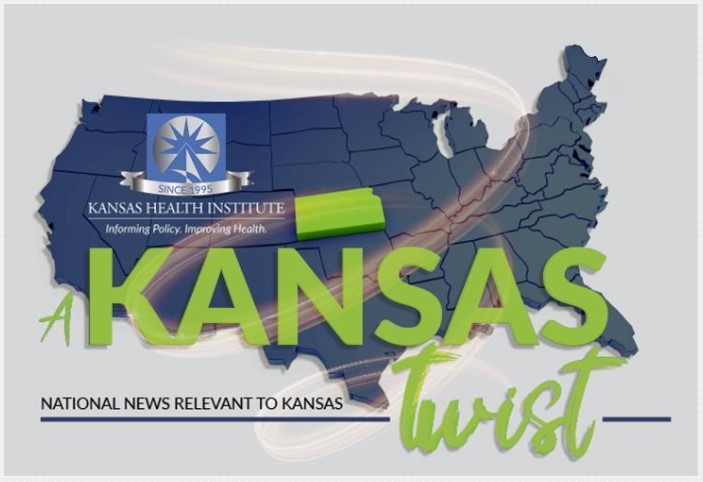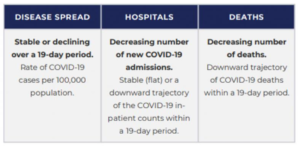Reopening Kansas: Back to School, Mask Mandates and the Delta Variant (August 13, 2021)
The recent surge in COVID-19 cases has sounded alarms across the state — KDHE reported 2,741 new cases between just Aug. 9 and Aug. 11. Through the week of Aug. 8, the highly contagious delta variant accounts for 97.7 percent of sequenced variant lineages in August, up from 96.8 percent in July and from 71.1 percent of specimens in June. The delta variant now has been identified in 87 of the 105 Kansas counties.
Nationwide, half of the population (or 58.9 percent of those eligible age 12 and older) is fully vaccinated as of Aug. 12. Two in five Kansans overall (43.0 percent), or half of eligible Kansans (51.1 percent), had completed a COVID-19 vaccine series and are fully vaccinated as of Aug. 11. The hospital census — and the number of COVID-19 positive patients in hospitals — is rising. An estimated 30 percent of ICU beds remain available in hospitals across the state, according to hospital capacity data reported on Aug. 10. The most vulnerable regions in the state are the Northeast, Southeast and Southwest Kansas, which all have 15 percent or less of adult staffed ICU beds available.
On Aug. 2, a mask mandate went into effect in Kansas City, Mo. On Aug. 6, Wyandotte County adopted a mask mandate effective through Sept. 9, but it excludes the county’s school districts. As of Aug. 12, no other Kansas counties had a countywide restriction in place (i.e., mask order, gathering size, etc.).
However, Johnson County commissioners adopted a mask order for public and private schools for students up to and including 6th grade. A growing number of Kansas school districts have announced mask requirements for the upcoming school year, including USD 203 (Piper), USD 229 (Blue Valley), USD 232 (DeSoto), USD 233 (Olathe), USD 308 (Hutchinson), USD 383 (Manhattan), USD 475 (Geary County), USD 497 (Lawrence), USD 500 (Kansas City, Kan.), USD 501 (Topeka) and USD 512 (Shawnee Mission). Schools may review the updated guidance published over the summer from the Centers for Disease Control and Prevention and the American Academy of Pediatrics.
At least 14 states (not Kansas) and Washington D.C., have passed a statewide school mask mandate. On July 30, Gov. Laura Kelly issued COVID-19 recommendations for schools including universal indoor masking, actively planning vaccination clinics and establishing a school-level testing strategy.
Some Kansas counties and school districts might be waiting to hear how the Kansas Supreme Court will rule on Senate Bill 40. Earlier this year, Gov. Kelly signed Senate Bill 40 which, among other provisions, revoked the statewide mask mandates, authorized the Legislature or the Legislative Coordinating Council to revoke certain orders issued by the Secretary of the Kansas Department of Health and Environment (KDHE) and limited powers granted to local health officers. SB 40 gave those powers to local elected officials, school boards and community colleges. SB 40 also established judicial review for executive and local orders issued during the COVID-19 pandemic. On July 14, a district court judge in Johnson County ruled that SB 40 is unenforceable through its enforcement provisions because it “deprives the relevant governmental units of due process while also violating the constitutional separation of powers between the judicial and legislative branches.” An appeal of this ruling by Kansas Attorney General (AG) Derek Schmidt was filed on July 21. The Kansas Supreme Court announced a schedule on Aug. 14 setting the brief filing for the AG by Aug. 26 and response by the Shawnee Mission School District by Sept. 9.
Check back for more information as we continue to monitor how Kansas counties respond to the surge in COVID-19 cases.









